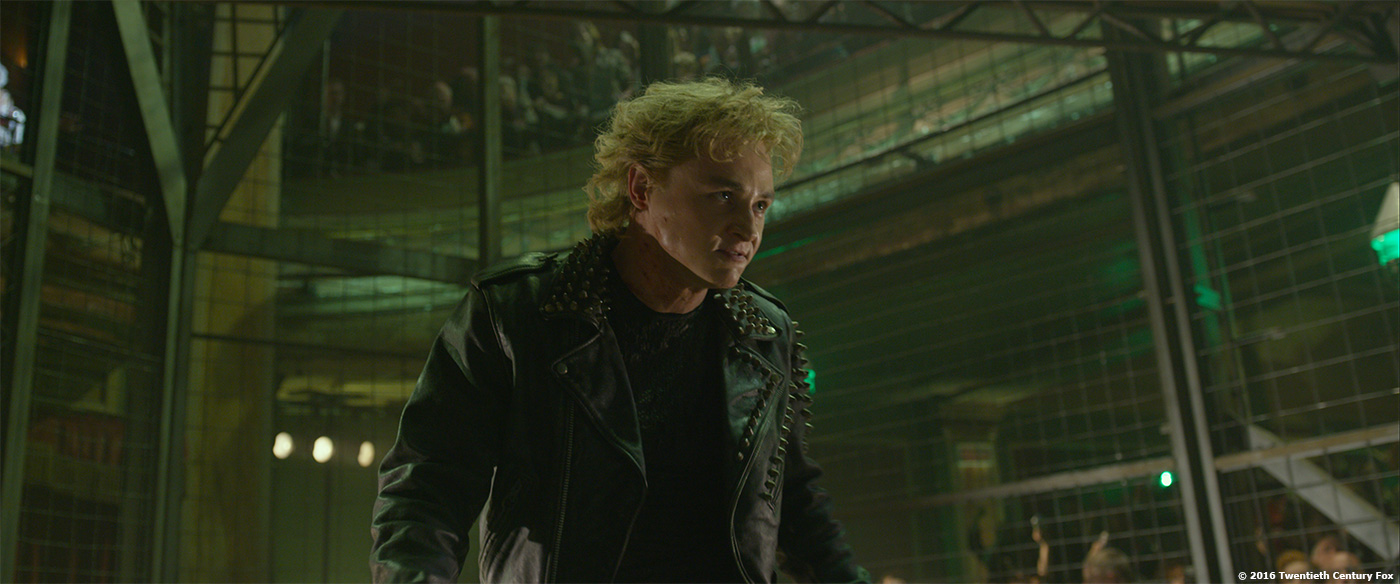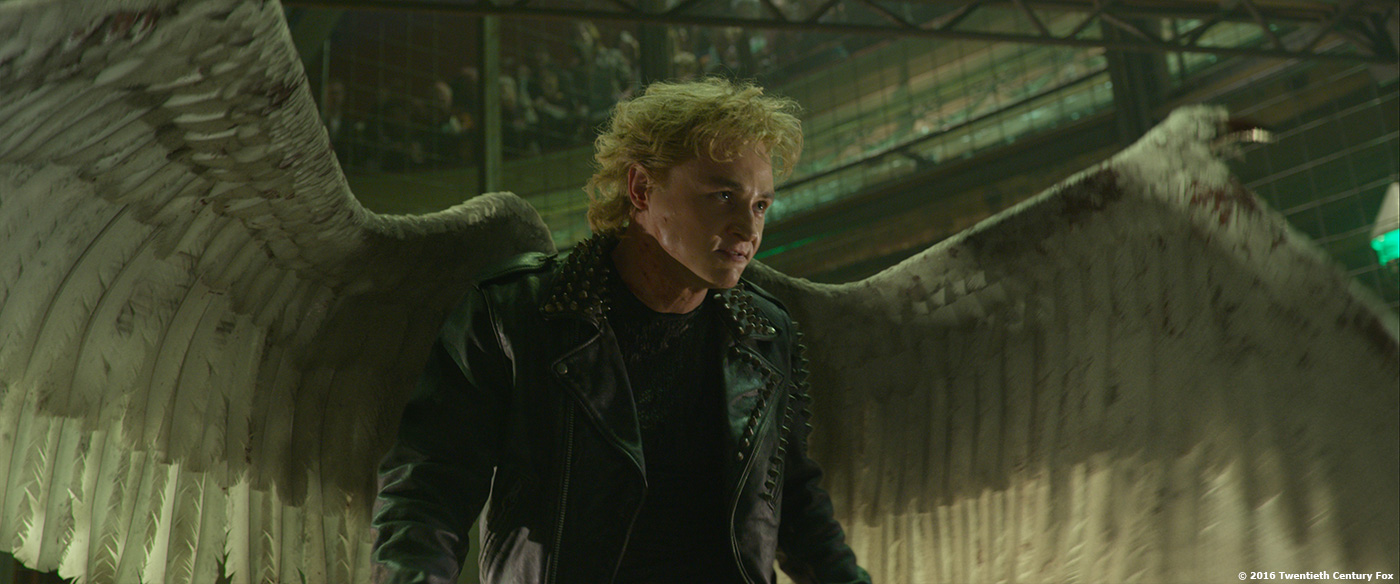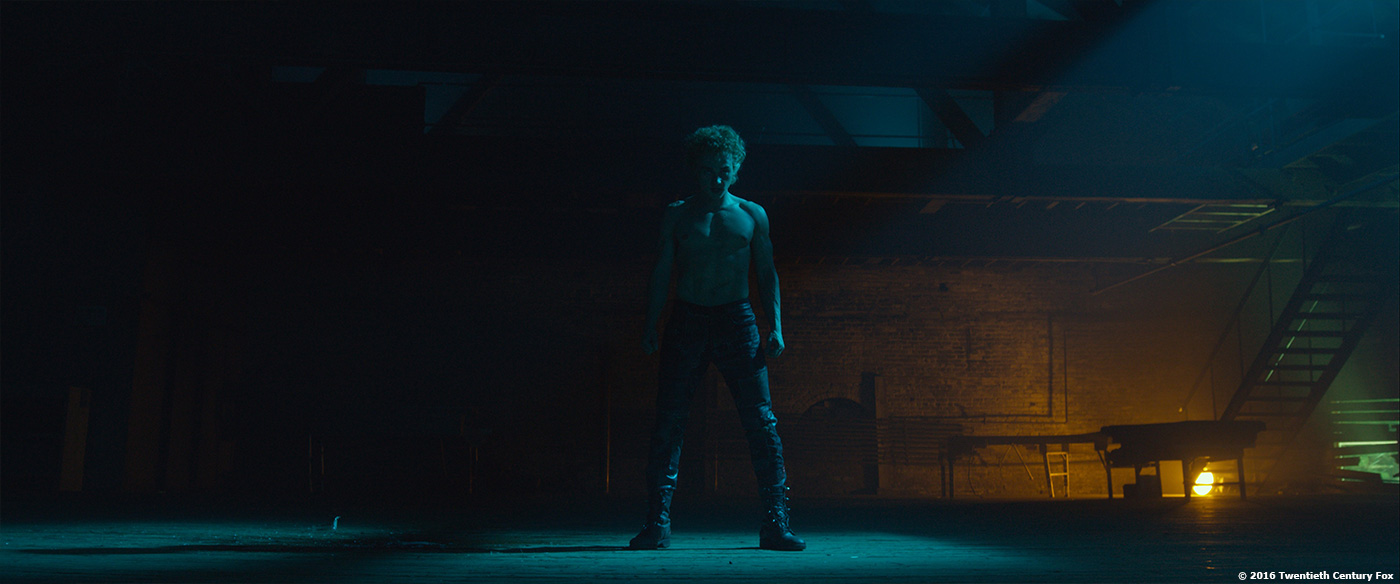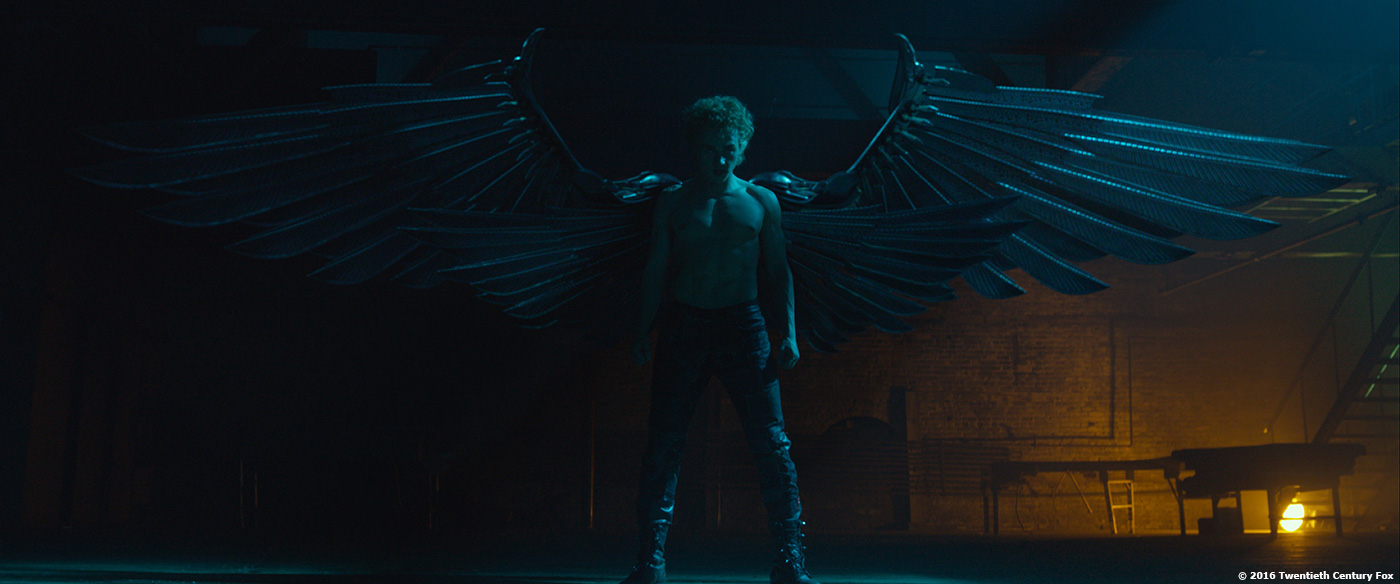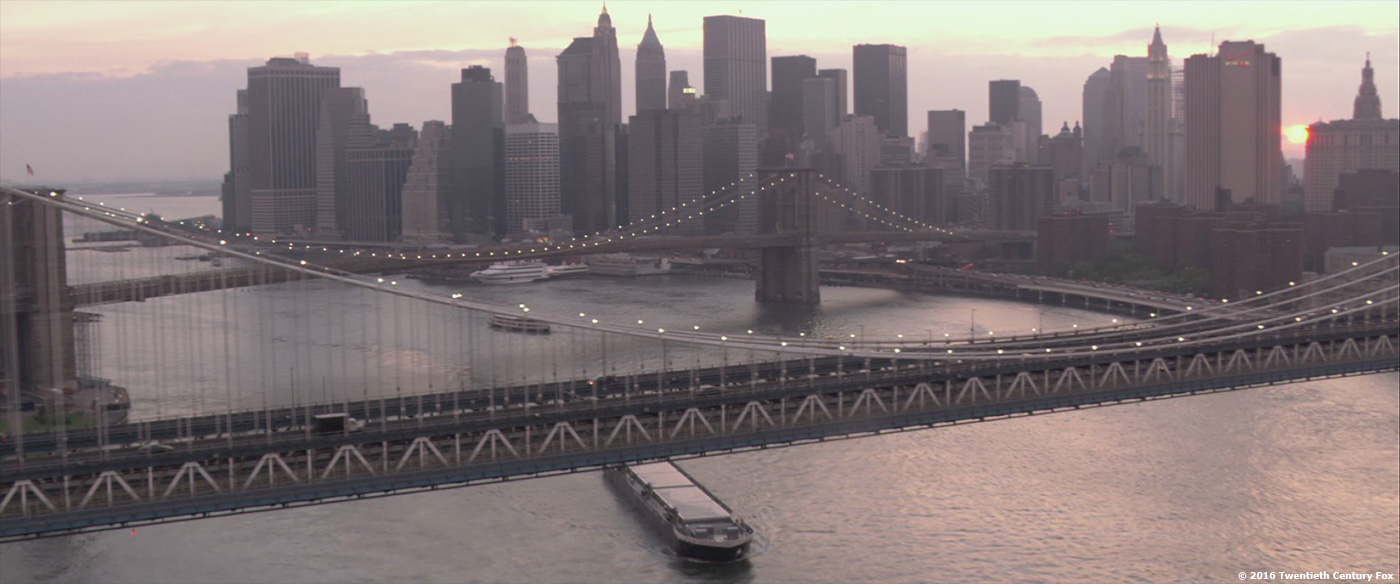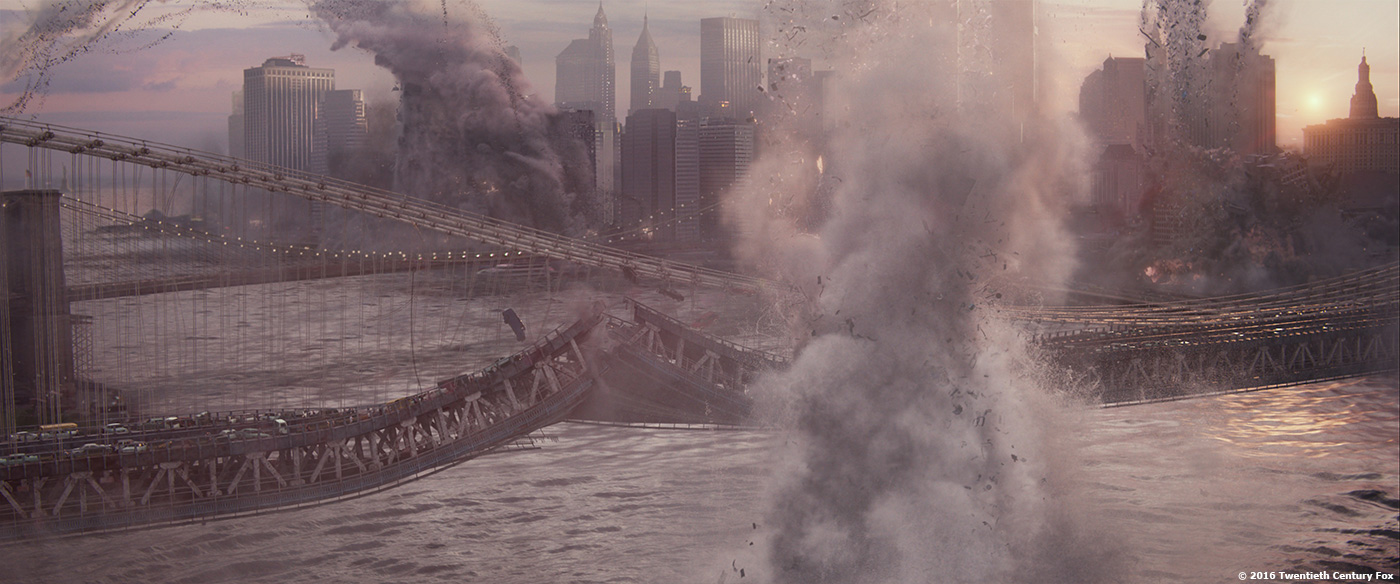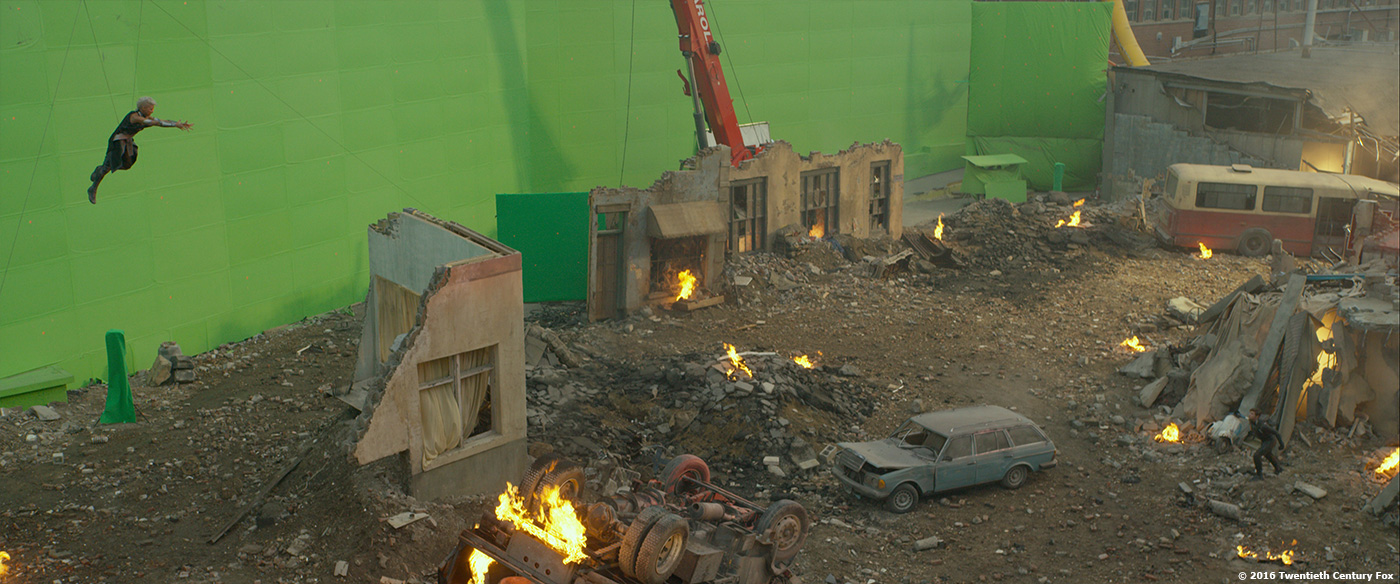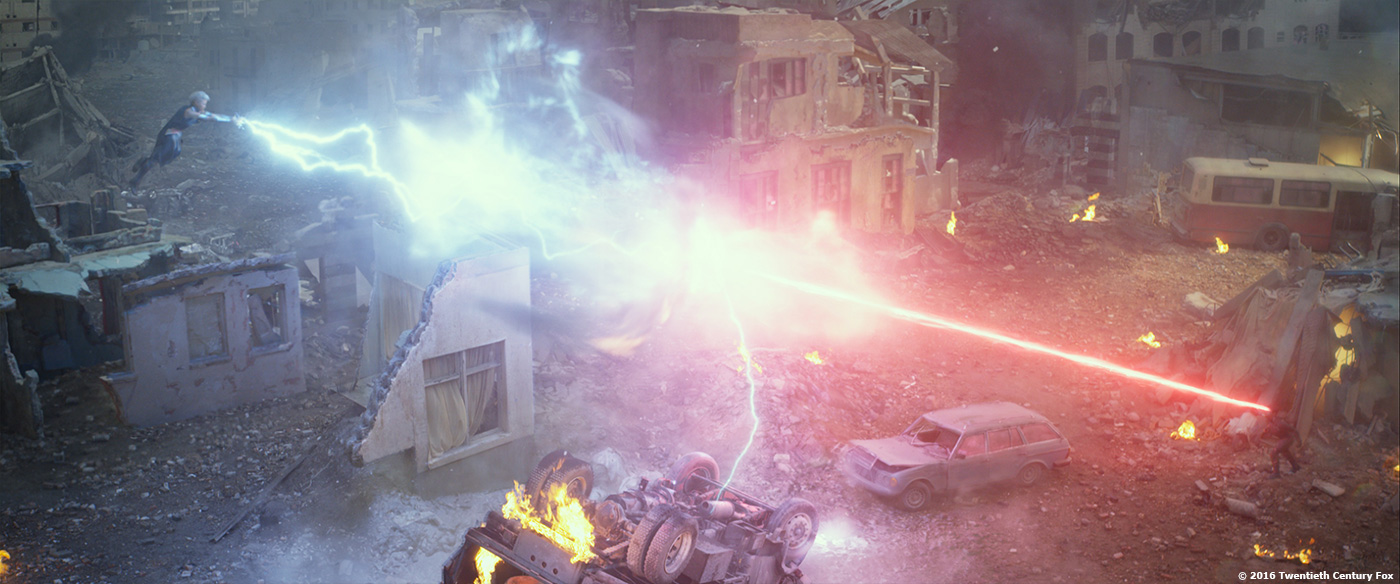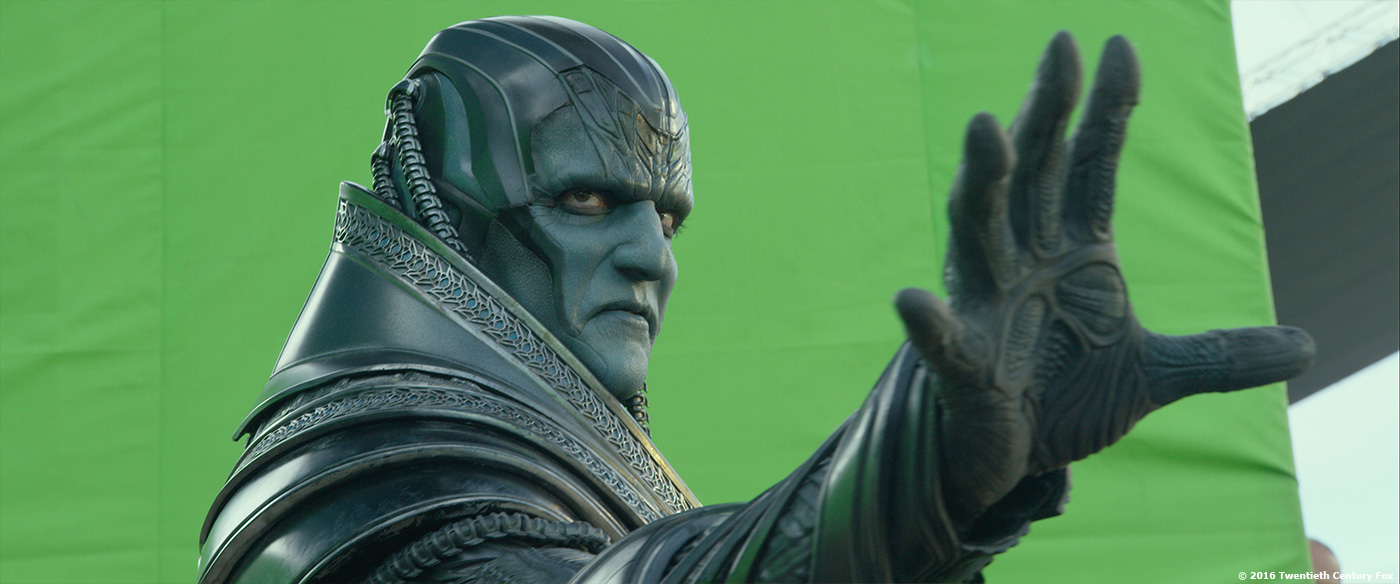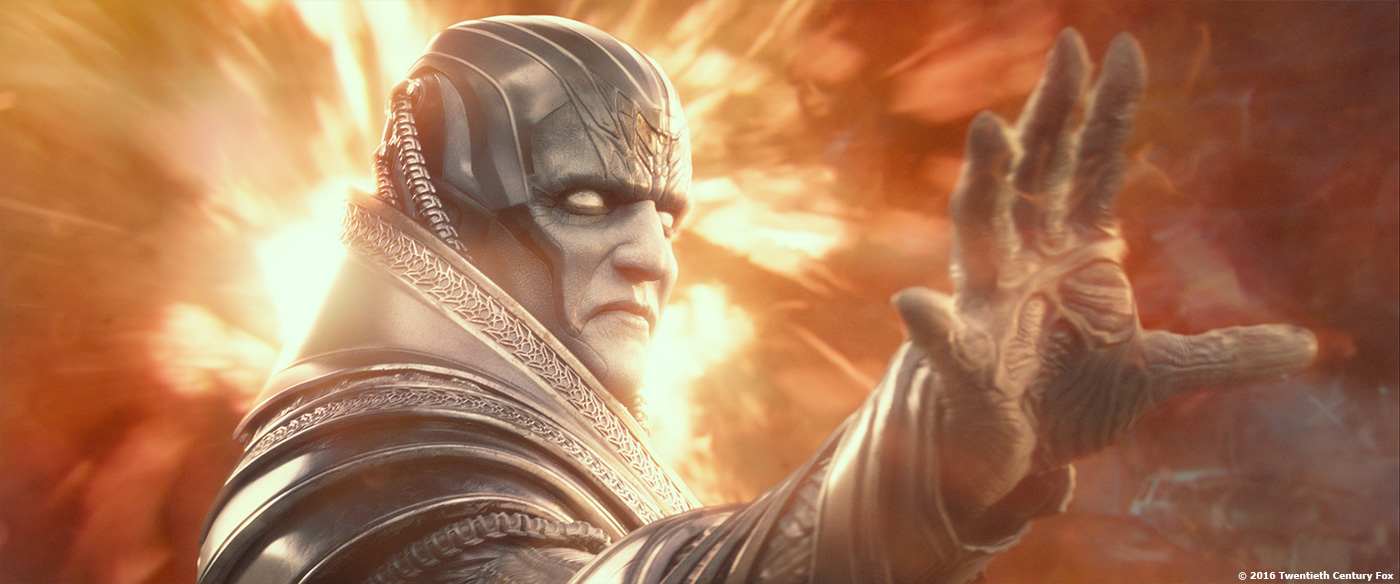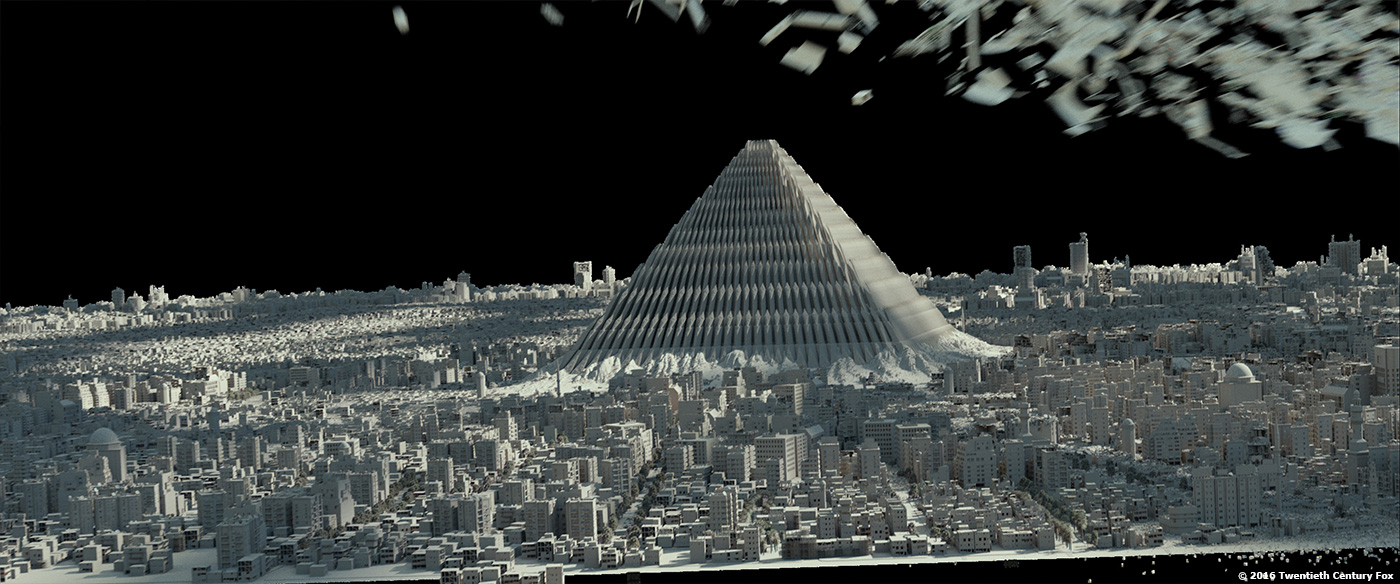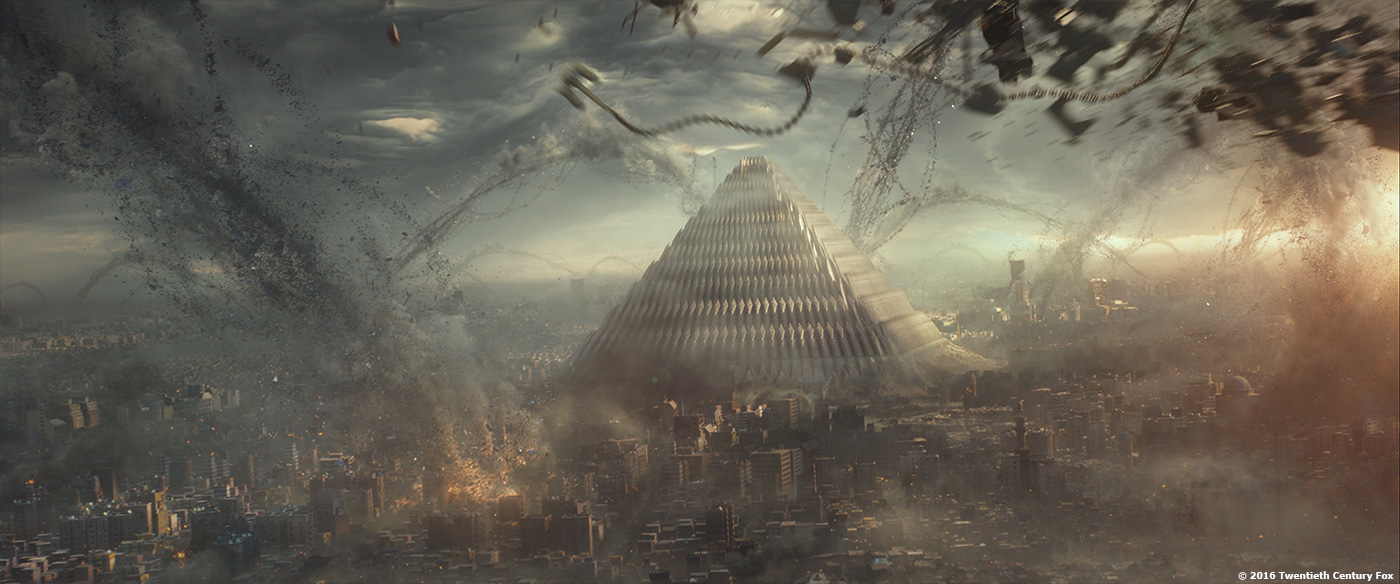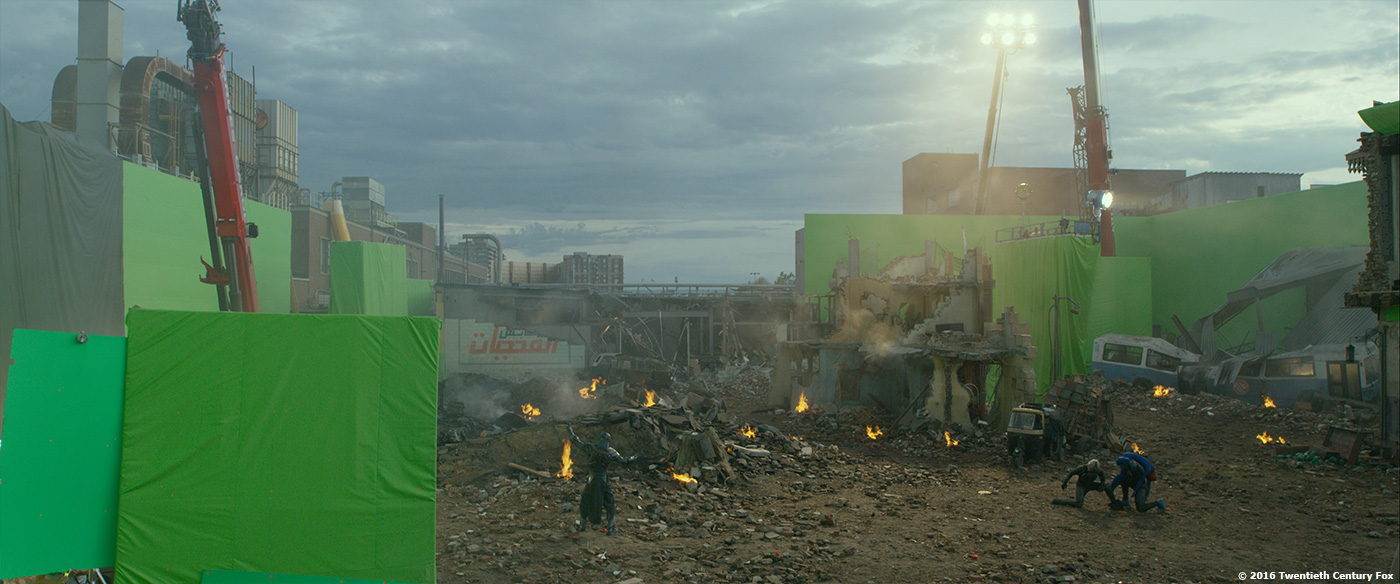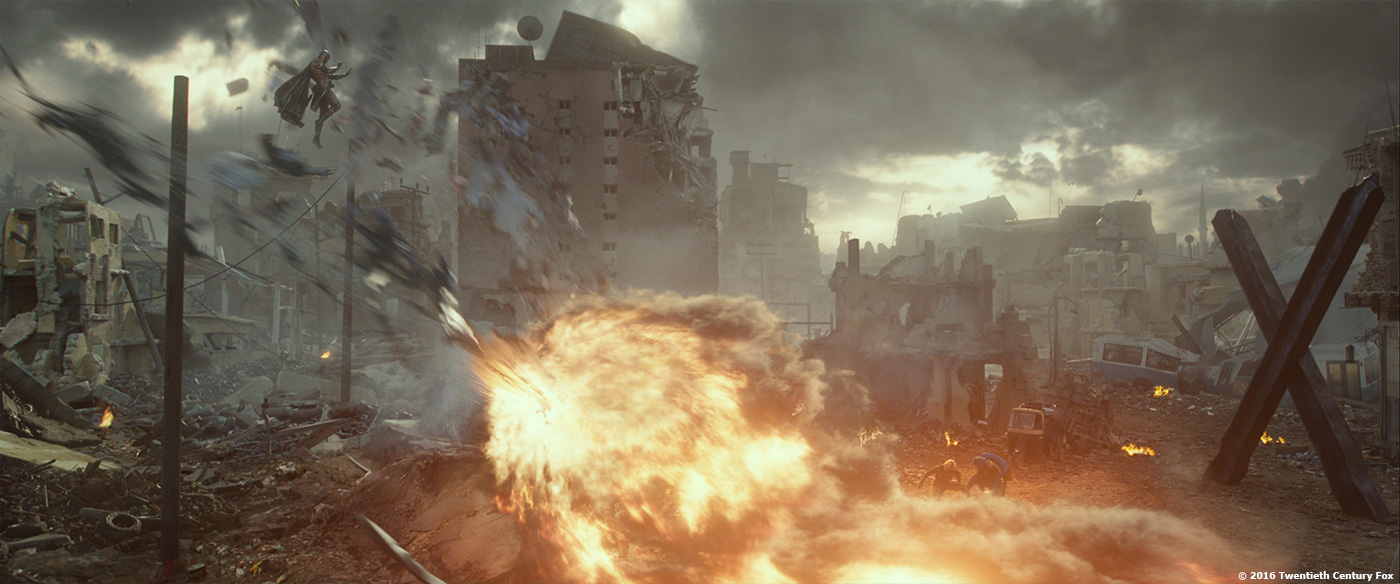Jerome Escobar began his career in the VFX in 2005 at nWave Digital as an FX artist. In 2010, he joined Animal Logic to work on LEGEND OF THE GUARDIANS: THE OWLS OF GA’HOOLE. He then joined MPC and works on films like MAN OF STEEL, MALEFICENT or X-MEN: DAYS OF FUTURE PAST.
What is your background?
I have worked in the VFX industry for almost 12 years now. In early 2011 I joined MPC as an FX TD, to work on HARRY POTTER AND THE DEATHLY HALLOWS: PART 2, then I had the opportunity to work on lots of interesting shows such as WRATH OF THE TITANS, JOHN CARTER and MAN OF STEEL. Over the years i’ve worked at MPC’s different facilities, London, Vancouver and now Montreal where I m now CG Supervisor. X-MEN: APOCALYPSE was my second show as CG Supervisor. The first being FANTASTIC FOUR.
How did you got involved on this show?
While I was finishing FANTASTIC FOUR I had a catch up with MPC’s VFX Supervisor Anders Langlands to talk about X-MEN: APOCALYPSE. By then he had a rough idea of the scope of the work, but one thing was certain, this show was going to be FX heavy. So with my FX background and the very good relationship I have with Anders it was kind of natural for me to jump on the show.
What was your feeling to be back on a X-Men movie?
Pretty good! I mean X-Men… It’s the kind of show that you want to be involved in if your working in the VFX industry. I’m not especially a comic book fan but I like the universe and the challenge to transcribe those powerful visuals from paper to screen.
I worked with Anders on the previous X-MEN (DAYS OF THE FUTURE PAST) as a FX Lead and working with him was very easy, we understand each other pretty well so communication was straight forward.
How was your collaboration with director Bryan Singer and VFX Supervisor John Dykstra?
As a CG Supervisor I wasn’t much involved with the direct communication to the clients, Anders and Axel Bonami (associate visual effect supervisor), were handling most of it. But being present during some client calls I can tell that the relationship was great.
John had a very clear idea of what needed to be done, and what Bryan Singer and himself wanted to see in the movie, as well as the kind of story the VFX needed to tell, in order to make the movie spectacular and powerful.
What was their approaches about the visual effects?
John Dykstra is a legend, one of father/pioneers of the VFX industry, one of ILM’s founders, supervising the team of STAR WARS and developed the very first motion-controlled camera (Dykstraflex) to BATTLESTAR GALACTICA (original one) and Sam Raimi’s SPIDER-MAN, just to mention a few! John knows exactly how VFX works, so as you would expect his approach is very knowledgeable and professional. he knows exactly what can be done and how long it takes.
Bryan Singer is a very experienced director who has directed many VFX heavy movies, so he is also very knowledgeable about the process and knows precisely what he wants. I have to say that on this show I was impressed by the amount of practical sets and stunts, which makes our work easier or at least much more efficient. For instance having a large scale set around the characters, gives us a very good idea of what the CG extensions needs to look like, and that’s a precious time saver.
How did you organize the work with VFX Supervisor Anders Langlands?
For X-MEN: APOCALYPSE, due to the large amount of shots that MPC was awarded, we needed to create a new approach to the organization and workflow, so split the show into two units, it’s something very common during shooting but much less at the post production stage, or at least within the same company.
The first team was lead by Anders Langlands, 2D Supervisor Julien Dias and myself as CG Supervisor.
The second one was lead by Axel Bonami, 2D Supervisor Ruslan Borysov and CG Supervisor James Rustad.
Both units were also supported by amazing work of the Environment Supervisor Marcell Nagy, Animation Supervisor Florent Limouzin, Asset Supervisors Jung-Yoon Choi & Chris Uyede, FX Supervisor Josselin Tonnellier and our technical CG Supervisor Francois Schneider looked after pipeline issues and optimizations.
What are the sequences made by MPC?
MPC was responsible for a large amount of sequences throughout the movie, but most iconic are the fight between Nightcrawler and Angel in the cage, the sequence where Angel becomes Archangel when he loses his featured wings for the metallic ones, all the Cerebro shots, the mind battle, the sequence with Magneto in the forest, the world landmarks and Cairo destruction and also the entire final battle.
How did you approach the creation of the Ancient Egypt and Cairo in present days?
MPC worked on 80’s Cairo while Digital Domain completed the work for Ancient Egypt. First we gathered tons of reference material to find visual clues that define Cairo from the other large cities. For example, big billboards on top of buildings, half finished houses but also the color palette. Once those were defined, Marcell Nagy supervised what we called the ‘set team’, which comprised of environment, layout and shading/LookDev artists. The team work closely together with the environment team in order to achieve the look, and I think they did an amazing job. They built a library of 30 buildings with color and texture variations, laying out the city based on real maps and adding tons of details as secondary dressing. They also gathered an incredible amount of photography for any 2D touch ups per shot basis.
The movie is featuring a lots of mutants with their powers. How did you approach this aspect?
Once again the key was in finding references from other movies and comic books. For characters such as Storm or Cyclops it was pretty straight forward as they already had a ‘visual identity’ long established in other movies. But Psylocke and Apocalypse was something new, at least in movies, so a little more challenging but definitely exciting!
Can you explain in details about the design and the creation of these powers?
The most challenging was by far En Sabah Nur who has multiples abilities, the main one is that he can control matter at a molecular level and therefore change atoms and their organization. For the movie we didn’t change lead to gold, but the whole Cairo destruction was based on that idea. Very early on in the production we knew what Bryan Singer and John Dykstra wanted for it, the solid (buildings) disintegrate into very fine particles that become volume (dust) then particles again and finally construct the new pyramid. A pretty challenging task if I may say.
Another challenge regarding En Sabah Nur was the portals he used to teleport. Anders really wanted to use the idea of the infinitely small and atom level, so we decided that a fractal pattern would sell the idea as you can zoom infinitely into it. Therefore we had some RnD going on for that idea! With the help of Joan Panis (Head of FX), the FX department was able to provide a 500 frame 8k map which was literally a ‘dive’ into the Mandelbrot fractal.
Which power was the most complicated to created and why?
For me it was the Psylocke Blade that she is able to generate from her hand. It was not the most complicated in term of technical challenge but more about nailing the look of it. The only references we had were static paper drawings, but how should it look like once it starts moving? It’s a very subjective feeling/vision, so it took us couple of iterations before we got to the look that John Dykstra and Bryan Singer were looking for.
Can you tell us more about the new Cerebro?
There are 3 stages of Cerebro in X-MEN: APOCALYPSE. The classical mutants and humans – red and blue – were done using similar concepts as on X-MEN: DAYS OF FUTURE PAST, but with an updated setup, higher resolution of the elements and more sophisticated colour palettes. Each hologram and element had a Nuke template with proxy mode – that was allowing artists to place and rotate holograms in the shot and see the animation before calculating the interaction and DOF.
The third Cerebro stage – when Apocalypse was taking over Charles’ mind – needed a new design and idea. The concept came from the action and the script. The layout for the effect was based on having a spherical portal that Apocalypse creates inside the room and then tries to compress Cerebro’s thought. To achieve this effect we came up with a custom rig for Nuke point cloud that allowed us to have very precise control over every parameter – speed, spread, size, shading etc. For optimization purposes the actual point cloud was only generated in the area visible through the render camera. Using this rig the compositing team animated Cerebro interaction with the portal texture, environment and holograms.
The final battle happens in a huge CG environment full of FX. How did you approach and created this sequence?
This sequence was shared between MPC Montreal and MPC London. MPC Montreal handled the environment work while MPC London completed most of the FX work. We had a team of FX TD’s in London who completed the FX for the battle between Magneto and Apocalypse including the metal streams and fire ‘shield’ around Apocalypse. We used a combination of Houdini, Maya and Flowline in order to achieve the look. All the environment work was done in Montreal, recreating destroyed buildings using set reference and simulated destructions.
Our Montreal FX Lead made a library of pre-destroyed buildings based on the models made by the Environment team to recreate Cairo. The idea was that Apocalypse dissolves the city to create the new pyramid and by then the matter is attracted towards the pyramid. As a result the buildings were more or less destroyed based on the distance and direction relative to the pyramid. So they created variations of destruction from the almost vanished to barely destroyed, but also depending on which side the buildings were facing the pyramid. In the end we had nearly 700 variations! And then with Houdini he was able to layout it properly and really give that feeling of complex and non-linear destruction. A lot of the foreground elements were modeled by our Environment team in order to have full creative control and also to add the desired amount of details and complexity.
Massive destructions are happening during the show. How did you used Kali for that?
We indeed used Kali for the Sydney Opera house, but for Cairo we went through Houdini and Voronoi pre-shattered approach. The fact is Kali is a great tool but it’s simulation based which means you have to find the right settings for each building, each destruction stage and each orientation (relative to the pyramid). For such amount of buildings and shots the task would have incredibly tedious. Kali is great for a one off shot, but in that case we didn’t feel that it was exactly the tool we needed. Timucin did a complex but fast and super flexible setup for it, allowing Anders and myself to have full creative control. Once the right settings of Voronoi and glue constraints were figured out, the FX team was able to generate hundreds of variations of destructions quite quickly! And this is crucial regarding the all the dependencies linked to the main destruction, because you have the destructions itself but also tons of particles and heavy dust simulations that need to be generated and rendered.
How did you manage the render challenges for so many elements?
Our lighting team did a fantastic job on that! From clever and optimized shading work to instancing objects as much as possible, as well the usual layering split at render time. But also a great deal of work has been done in terms of optimizations in order to get the best from RenderMan RIS with relatively quick render time.
What was your most complicated sequence and how did you achieve it?
For me the most complicated scene was the final battle due to the complexity of the CG environment, the large amount of shots and hundreds of FX elements.
And how did we achieve it? Team work! I mean the team did such an amazing job, it was a very long and complex sequence for every department, and everyone worked really hard to make it happen! I’m really proud of what the team has been able to do!
How did you enhanced some of the stunts in the final battle like the Psylocke shot cutting a car in two part?
For that particular shot the Compositing team did small manipulations on the plate such as animated scale. For other shots we had to replace the stunts actors either partly or entirely with our CG doubles. But for most of the shots we just used the plate. The stunt work was great!
In one sequence, En Sabah Nur is changing is size. How did you created this effect?
That shot was a split comp, we received two different plates for it, one for Charles and one for En Sabah Nur. So at first we tried a 2D approach using scale and repo but it wasn’t really working so we decided to go full CG for En Sabah Nur. Our rigging lead made a great rigPuppet that allowed animators to scale it. Then a bit of shading and texture adjustments were required in order to make it work, but it was relatively straight forward.
Jean Grey deploys her full power with a beautiful phenix. How did you created this FX?
The main shape of the Phoenix itself was modelled and rigged, and our animation team animated it in a nice and organic way. Then later our London FX team generated beautiful particles and CG fire passes from it. Finally our comp team finished the look, generating Nuke particles in order to add more complexity and detail.
Can you tell us more about the death of En Sabah Nur?
As the Phoenix needed to entirely disintegrate him over a few shots, the asset team had to model En Sabah Nur’s muscles, organs and bones in order to make it believable. Later it was added to the rigPuppet and animated. Once the animation was done and approved the FX team generated the disintegration using mostly Maya and a smart texture setup, revealing holes into his body and generated pretty cool particles passes.
What do you keep from this experience?
I learnt a lot during this adventure, but the main one is team work! We had such a large amount of shots, so many assets, FX passes, numerous and challenging environments, character work. Everyone worked hard and made it possible! It was a great professional and personal adventure!
Was there a shot or sequence that prevented you from sleep?
Haha, a few!
How long have you worked on this film?
From August 2015 to April 2016, so 8 months.
How many shots have you done?
996.
What was the size of your team?
At the peak close to 250.
What is your next project?
I’m again pretty lucky, I recently started to work on GHOST IN THE SHELL!
What are the four movies that gave you the passion for cinema?
It’s a tough question as there are many great movies! But I will say JURASSIC PARK , ALIEN, TERMINATOR 2: JUDGMENT DAY and THE GODFATHER.
A big thanks for your time.
// WANT TO KNOW MORE?
– MPC: Dedicated page about X-MEN: APOCALYPSE on MPC website.
© Vincent Frei – The Art of VFX – 2016


